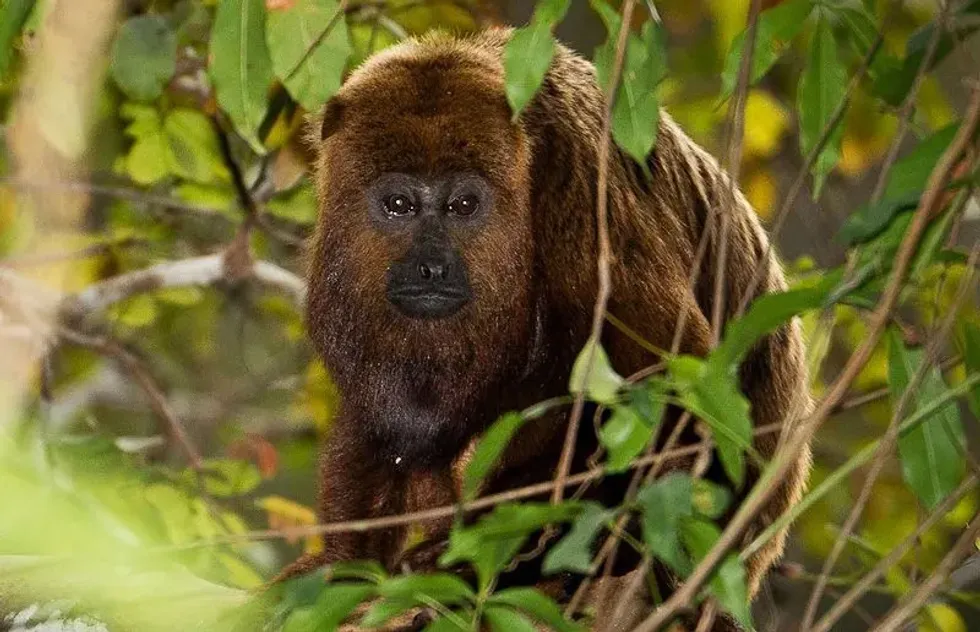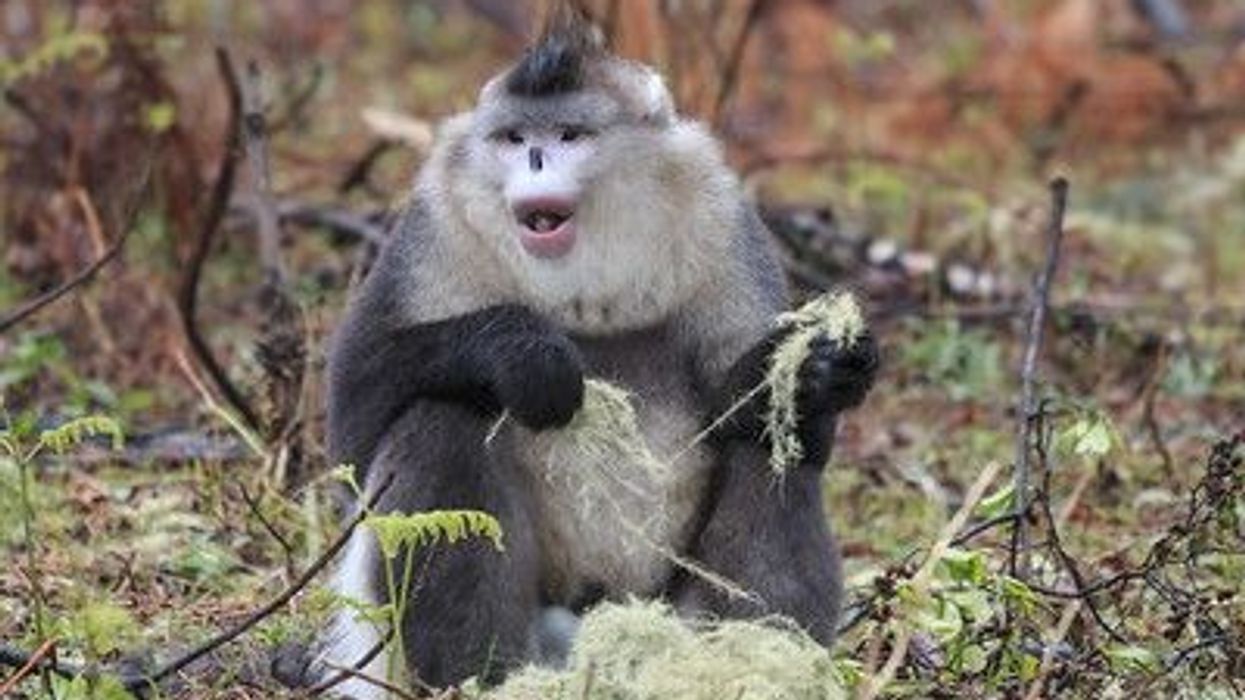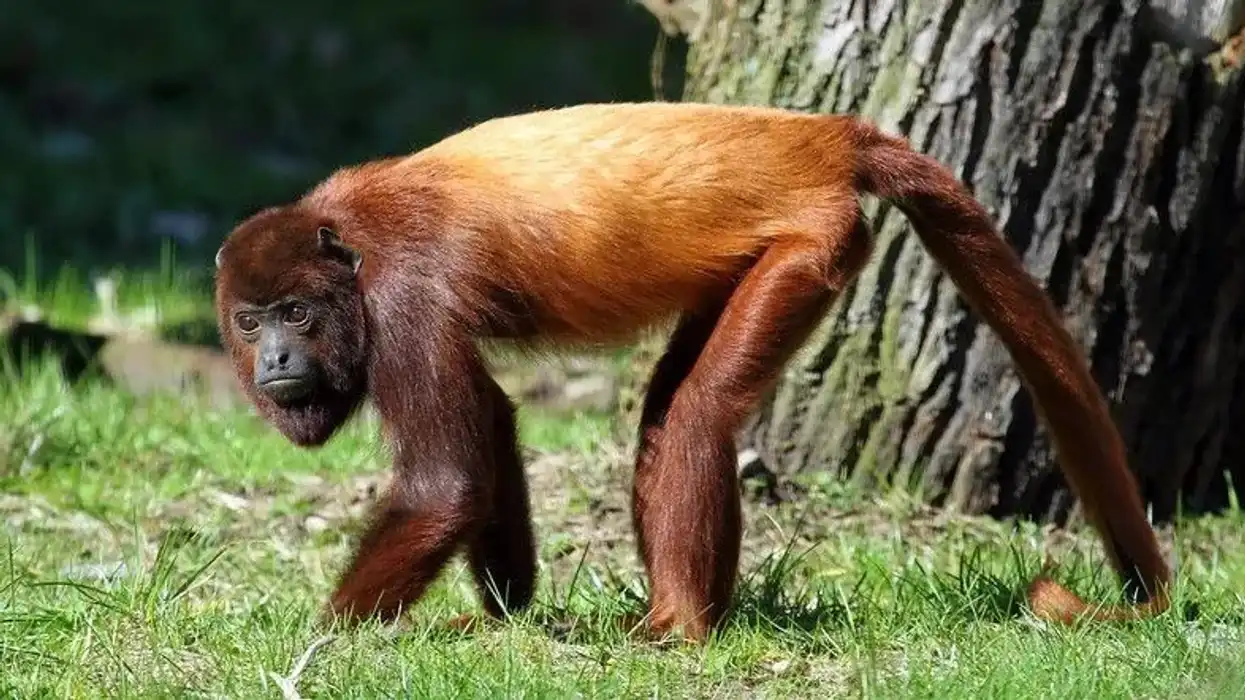You might find this monkey lounging around in a tall tree in the South American rainforests, if you can catch sight of this elusive monkey at all. The brown howler monkey is one of the most critically endangered species in terms of population in all of South America, and some scientists say, in all of the Americas.
This population got its name from its tendency to howl loudly. It howls loudly to attract mates and to warn fellow monkeys about a potential predator.
The howler's vocal cords are likewise adapted to make a distinct sound, howling. The most common motive for howling is to defend a partner.
When both male and female howlers are present, the sound of howling is very common. During the summer months, howling also happesn in groups.
Learn all about their various populations and behavior in this article, and do not forget to take a look at other interesting animals, such as the baboon and langur monkey. Happy reading, and do not forget to share these fun facts with your friends!
Brown Howler Monkey Interesting Facts
What type of animal is a brown howler monkey?
The brown howler monkey (Alouatta guariba) is a type of monkey.
What class of animal does a brown howler monkey belong to?
The bown howler )Alouatta guariba) belongs to the class of mammals.
How many brown howler monkeys are there in the world?
Brown howler monkeys have been in the world's 25 most critically endangered primates in 2016–2018 and repeatedly in the 2018-2020 assessment. There could be as few as 250 southern brown howler (Alouatta guariba clamitans) in the population, with just 50 mature individuals scattered over shrinking forest patches.
Where does a brown howler monkey live?
Howler monkeys (Alouatta guariba) live in the woods and rainforests of South America.
What is a brown howler monkey's habitat?
The howler monkey is found in the Atlantic forest in South America. The region spans the Brazilian provinces of Bahia and Espirito Santo, and the Brazilian states of Rio Grande do Sul and Misiones in Argentina.
Lowlands, montane, submontane forests, and inland semideciduous annual woods are all home to brown howlers. Brown howlers live in highly seasonal subtropical and tropical habitats in south-eastern Brazil.
Who does the brown howler monkey live with?
Brown howler monkeys usually dwell in 6-15 animals, with one to three adult males and several females. However, mantled howler monkeys are an anomaly. They usually live in groups of 15-20 individuals, with at least three adult males. The group size depends on the species and the locality.
How long does a brown howler monkey live?
The longevity of the genus Alouatta members is typically 15-20 years, while langur monkeys live for 20-30 years. There is information that males in sexually dimorphic species live shorter lives than females, but no such data exists for brown howlers.
How do they reproduce?
Howler monkeys (Alouatta guariba) are a New World monkey and are difficult to produce in captivity. This means that their reproduction method is unclear.
Brown howlers have a year-round breeding season. As the brown howler eats a folivorous diet, it is considered that conception is less reliant on mother factors. The brown howler has a 20-month average IBI (interbirth interval), comparable to other howler species.
IBI appears to be unaffected by the sex of the baby or the proportion of females in the population. Every male and female move away from their birth groups as minors.
What is their conservation status?
The conservation status of brown howler monkeys is listed as Vulnerable by the IUCN (International Union for the Conservation of Nature).
Brown Howler Monkey Fun Facts
What does the brown howler monkey look like?
They possess prehensile tails, similar to spider monkeys, with a bare patch of skin on the anterior side of the end of the tail. On average, males weigh 5.5 lb (2.5 kg) more than females, making brown howlers sexually dimorphic.
Females are lighter brown throughout the south and deeper brown mostly in the north, while males are more crimson in the south and less reddish in the north. In comparison to other New World monkeys, the legs are thick.
Northern howler monkeys, both female and male, have rough auburn-colored furs with swaths of blackness from their shoulders to their arms. Sexual dimorphism is seen in black howlers (Alouatta caraya).
How cute are they?
Their cuteness is usually due to their physical features. They have a longer prehensile tail than most other monkey species. They are frequently regarded as the loudest land creatures.
How do they communicate?
Howler monkeys, a form of New World monkeys, rub one another to communicate with one another. Males are thought to be more domineering than females since they rub more frequently. Dominant females will rub more frequently than non-dominate females, which is still far less frequent than males.
How big is a brown howler monkey?
The length range of this primate is about 22.05-36.22 in (56-92 cm). The Colobus monkey length measure approximately 28 in (71 cm). Howler monkeys with their long-tails are larger than Colobus monkeys.
How fast can a brown howler monkey run?
This howler species with the long tail has the ability to move at speeds of up to 18 mph (28.9 kph).
How much does a brown howler monkey weigh?
The average weight range of these animals is between 8.81-15.42 lb (4-7 kg). The weight of male members is greater than females.
What are the male and female names of the species?
Male and female howlers with a Vulnerable conservation status do not have separate names. However, they can be told apart by their weight and color.
What would you call a baby brown howler monkey?
Baby brown howler monkeys (Alouatta guariba) with a prehensile tail residing in northern Argentina do not have any specific name.
What do they eat?
Brown howlers are frugivorous and folivores. The brown howler monkey's diet is mostly made up of trees and leaves. The genera Zanthoxylum, Ficus, and Eugenia, appear to be the most commonly consumed food sources.
Higher-latitude howler monkeys ingest a smaller percentage of plants in their diet. Mature leaves are less nutritive and more fibrous than younger leaves.
The Atlantic woodland, which is home to brown howlers, is becoming increasingly fragmented. Forest fragmentation will result in a reduction in potential food stocks. Seed dispersers, such as red-tailed monkeys, aid trees like Strychnos mitis.
Are they dangerous?
Brown howlers are mostly harmless. They dwell in the trees and are constantly on the lookout for humans in their domain.
Would they make a good pet?
If you believe you want to have a monkey, give it some thought. This species is Vulnerable and very loud. Unfortunately, they do not make excellent pets.
Did you know...
The howler monkey (Alouatta guariba) is an indigenous primate of the Atlantic forest in South America. However, in Argentina, the brown howler (Alouatta guariba clamitans) was moved from Endangered to Critically Endangered in 2012.
Brown howlers with prehensile tails are a type of New World monkeys, are very sensitive to the yellow fever virus and face a high fatality rate when afflicted. When large numbers of brown howlers are discovered dead, it is a sign that a yellow fever outbreak is underway.
Due to their high mortality rate, brown howlers aren't thought to keep the virus alive in their population.
Communities living near brown howler populations believed that howlers were the source of the disease and that they needed to kill these monkeys to stop the disease from spreading.
Residents should minimize the slaughter of brown howlers and be vaccinated to avoid the disease from occurring. Yellow fever is spread through mosquitos as they are carriers of this disease.
Yellow fever is spread by mosquitos of the genera Sabethes and Haemagogus in South America. Sabethes albiprivis, a species found in Argentina, has been found to contain the yellow fever virus (YFV).
There have been yellow fever outbreaks in two species of howler monkeys (Alouatta guariba clamitans and Alouatta caraya) in Misiones ( Argentina). In Argentina, the brown howler is scarce, and any epidemic could harm the population. Therefore, the Brown Howler Conservation Group was formed by scientists to continue studying and monitoring yellow fever affecting brown howler populations.
Are howler monkeys aggressive?
Despite their powerful vocalizations, howler monkeys do not behave violently toward humans and are sometimes are kept as pets. However, the northern brown howler monkey's behavior and living habits are poorly known.
Are howler monkeys strong?
Howler monkeys are thought to be powerful animals. These primates found in northern Argentina and southern Brazil have a powerful tail and can cling from tree branches upside down only using their tails.
Here at Kidadl, we have carefully created lots of interesting family-friendly animal facts for everyone to discover! For more relatable content, check out these woolly monkey facts and howler monkey facts for kids.
You can even occupy yourself at home by coloring in one of our free printable brown howler monkey coloring pages.










